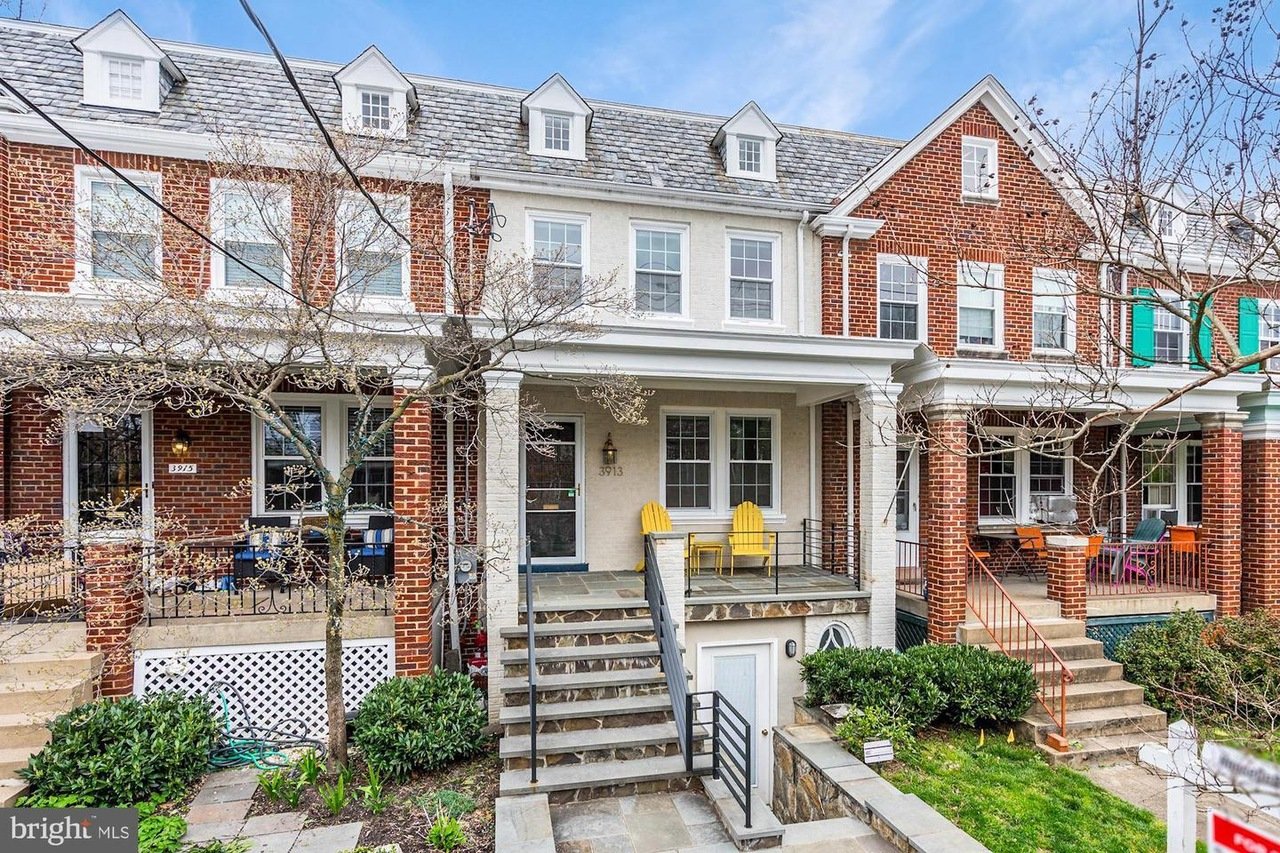Cynthia Borys loves to throw dinner parties. She also likes to display treasures she’s collected on her travels.
Thanks to a remodeling of her Silver Spring home, Borys not only has room for both passions but has less clutter.
Borys’s Foreign Service job had kept her overseas for most of the 20 years she’s owned her townhouse. Now she’s home more and says she couldn’t bear the 1980s beige and almond any longer. She signed on Apartment Zero designers Cheryl Ransone and Shannon Wang because she loves the DC shop’s sleek and colorful modern furnishings.
Borys wanted openness—without knocking down walls. “The space is small, but I wanted a cohesive flow among the rooms,” she says. And though she likes modern minimalism, her Asian travels have fostered a taste for warm Buddhist calm. The design blends earthy shapes and hues with sharp geometry and color in repeated elements—red, rectangles, and glossy surfaces—that tie the rooms together.
In the dining room, buttery walls, rattan window shades that filter sunlight, and tawny wood floors warm the room. Bright white trim and a marble dining table keep it light and contemporary. Some drama is introduced with the large, red-silk light fixture and the black steel dining-table base.
Lighted perches in a kitchen wall display her ostrich-egg collection. Another niche in the living room holds an African statue. The high-gloss red of the display spaces mimics the Asian lacquer in Borys’s collection.
Floating black shelves in the kitchen echo the black of the table and appliances, while a red Asian box captures the shape and color of the light fixture. A floating cabinet provides cover for a telephone and light switches. Sliding doors to the dining room frame two prized red-gilt Burmese panels for which Borys had never been able to find a home; two others hang at either end of the dining room.
Caramel cupboards and creamy floor tiles warm the kitchen, but the cabinets’ sleek Italian design and gleaming finish are decidedly modern. A resin backsplash inlaid with reeds from 3form—which uses everything from stones to flower petals—provides an earthy touch against the stark black appliances and granite.
Sources
Paint: Philadelphia Cream on the dining-room walls, White Dove on trim. In the kitchen: Linen Sand. All in eggshell finish by Benjamin Moore.
Rattan window blinds: Horizons Natural Shade line from Custom Stitch Designs, Annapolis; 410-263-0956.
Dining-room light fixture: from Bone Simple Design, New York; 212-627-0876; bonesimple.com. Around $1,800.
Floor tiles: Architectural Ceramics, in Rockville, Alexandria, Washington Design Center, Falls Church, and (soon) Bethesda; architecturalceramics.net.
Appliances: dishwasher, cooktop, and oven by Miele; refrigerator by Sub-Zero (model 700 TC). Supplier: the Appliance Source, Annapolis; 410-267-7110.
Appliance installers: RJ Dolley, Savage; 301-490-2336.
Kitchen cabinets and installation: Snaidero’s Sistema Zeta in caramel yellow and matte lacquer, around $40,000. Studio Snaidero DC, Washington Design Center, Southwest DC; 202-484-8066; snaidero.com.
Counter and installation: Counter Intelligence, Silver Spring; 301-589-5321; countintel.com.
Backsplash: “Thatch” by 3form; 3-form.com. Around $3,000.
Sink and faucet: by Blanco (style: Purus). Supplier: Ferguson, ferguson.com.
Glass door: custom stainless steel made by Element Designs, North Carolina; 704-332-3114; element-designs.com.
Construction (except cabinets and counters): D.H. Veirs Contracting, 301-929-0229; dhveirs@verizon.net.
Door and drawer hardware: by Omnia, in stainless steel. Supplier: Walter Works Hardware, Annapolis; 410-263-9711.
Interior design: Cheryl Ransone (cheryl@apartmentzero.com) and Shannon Wang (202-628-4067; shannon@apartmentzero.com).
Many Washingtonians have things they collect. Designer Cheryl Ransone often shows clients how to cut down on clutter by rotating pieces on display rather than having everything out at once. “Coordinating them makes for stronger, cleaner groupings so you can appreciate them more,” she says.


















